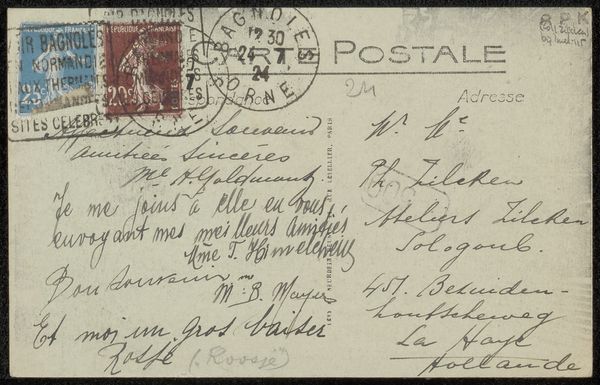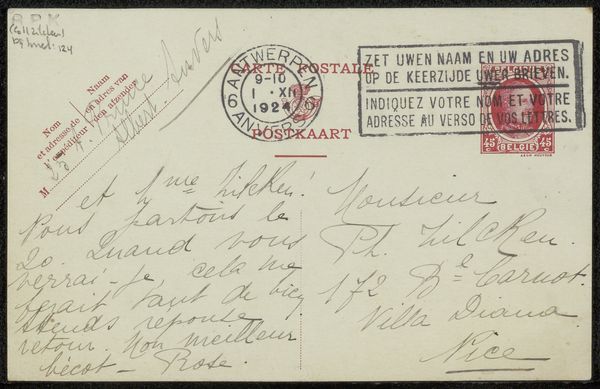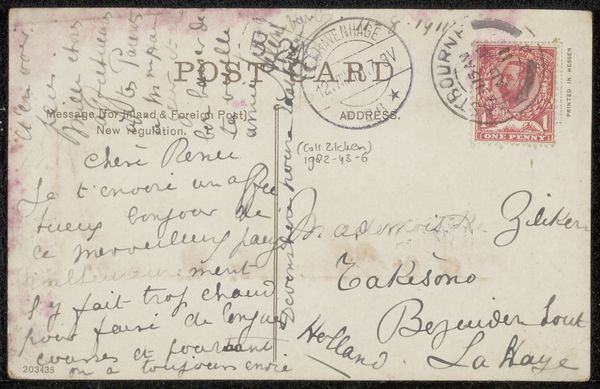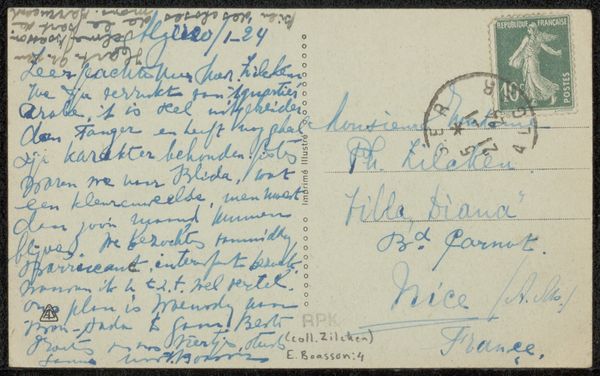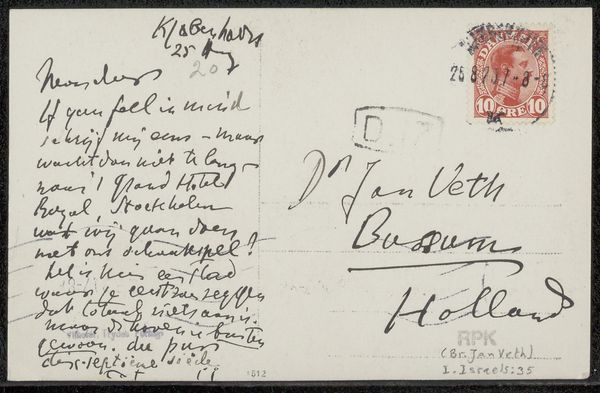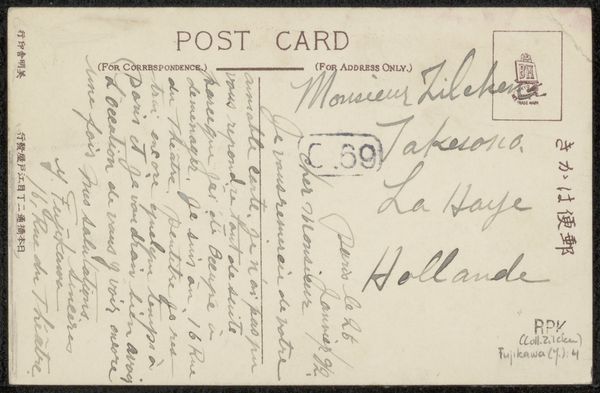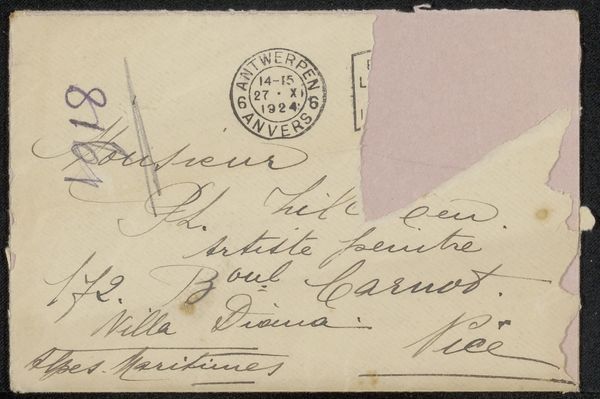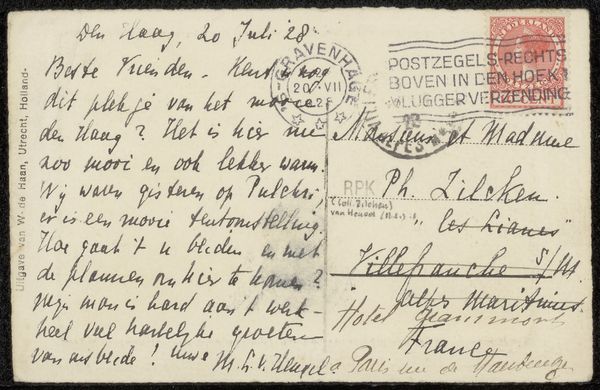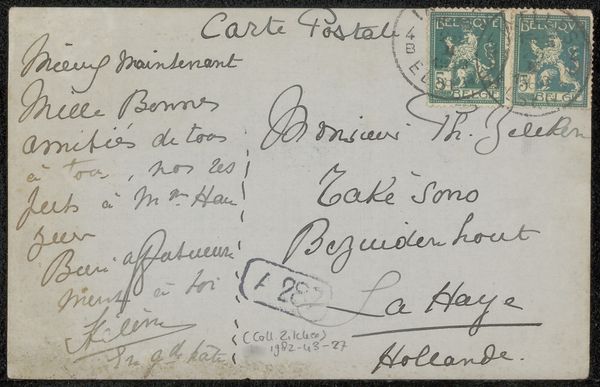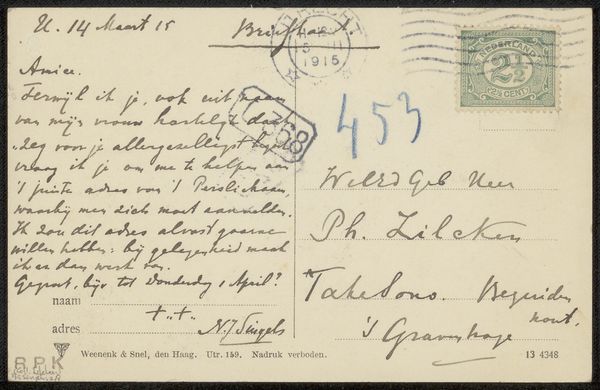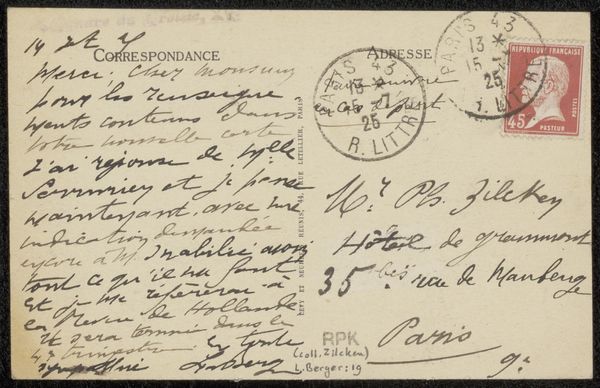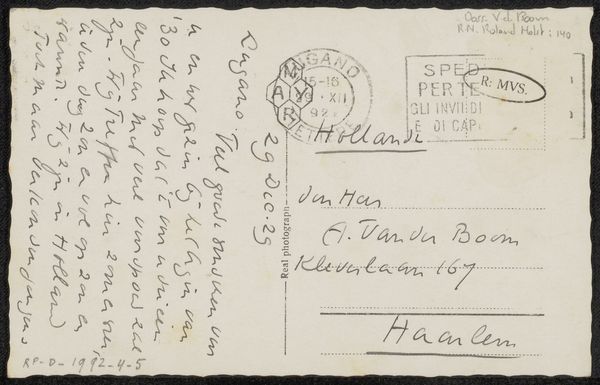
drawing, print, paper, photography, ink, pen
#
drawing
# print
#
paper
#
photography
#
ink
#
pen
Copyright: Rijks Museum: Open Domain
Editor: This is a photograph of a postcard titled "Brief aan Philip Zilcken," predating 1931. It seems to be ink on paper, a handwritten note with a stamp. It feels intimate, a glimpse into a personal exchange, but also somewhat mysterious due to the faded script. What symbols or meanings do you see layered within this piece? Curator: The faded ink itself becomes a powerful symbol, doesn't it? It speaks to the passage of time, of words sent and received long ago. Note the stamp – a clear emblem of Belgian identity and the early 20th century. Think about what a handwritten note *meant* then. It signified commitment. The flowing script suggests personality, urgency even, qualities often absent in our digital communications today. Editor: That's true, the handwriting adds a layer of humanity that's easily lost now. The address, "La Haye," and the sender's name also suggest something about the social circles of these individuals, correct? Curator: Precisely. Consider the context: 1912, just before the outbreak of the First World War. Europe was on the brink. This simple postcard then carries a deeper weight – a snapshot of a world about to be irrevocably changed. Is the message itself just everyday banter, or does it hold secrets, anxieties about the imminent future? It begs so many questions. Editor: I hadn’t considered the pre-war context, that completely changes the mood for me. I see the ordinariness, like a little moment of connection against a backdrop of global turmoil. Curator: And that's the power of art, isn't it? It's not just about what is presented, but also about the historical and cultural memories that it evokes. Every detail tells a story if we pause to listen. Editor: Absolutely. This brief postcard now seems infinitely more complex. Thanks, I learned a lot from your reading.
Comments
No comments
Be the first to comment and join the conversation on the ultimate creative platform.
